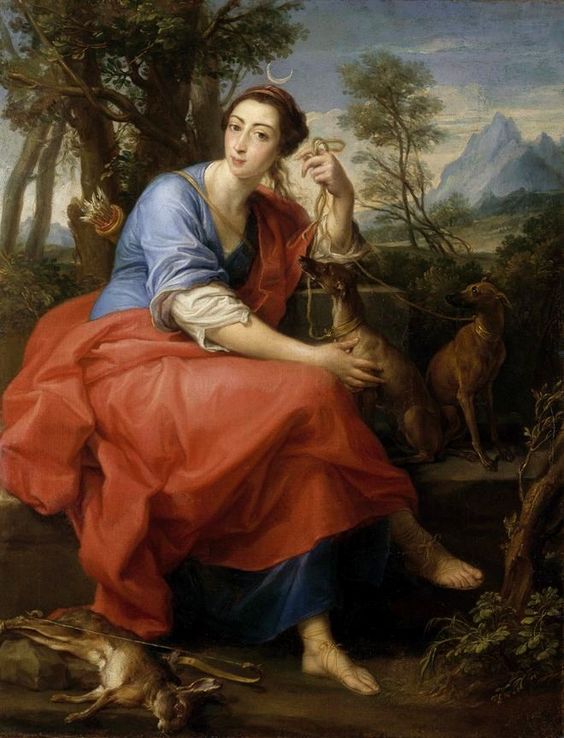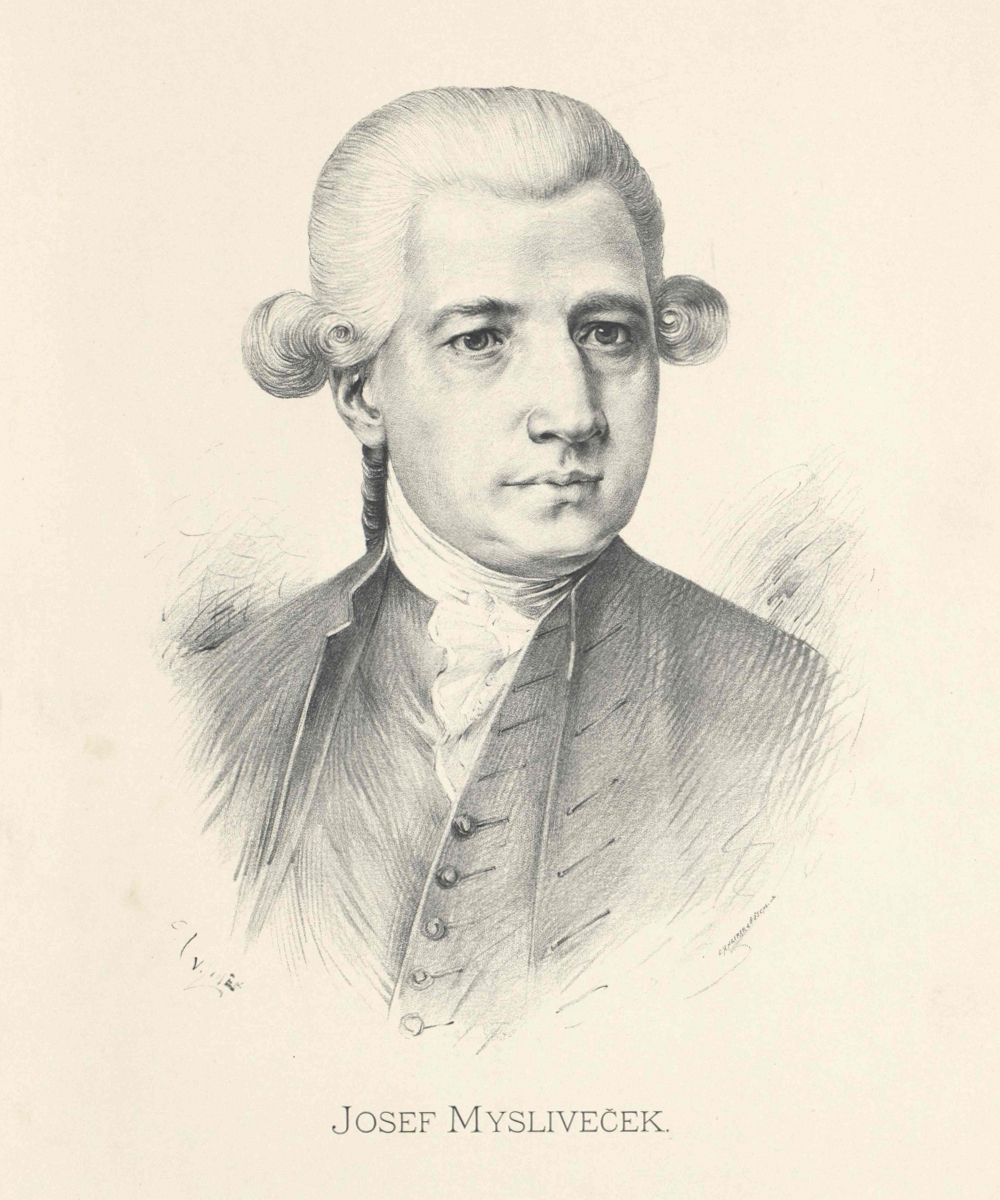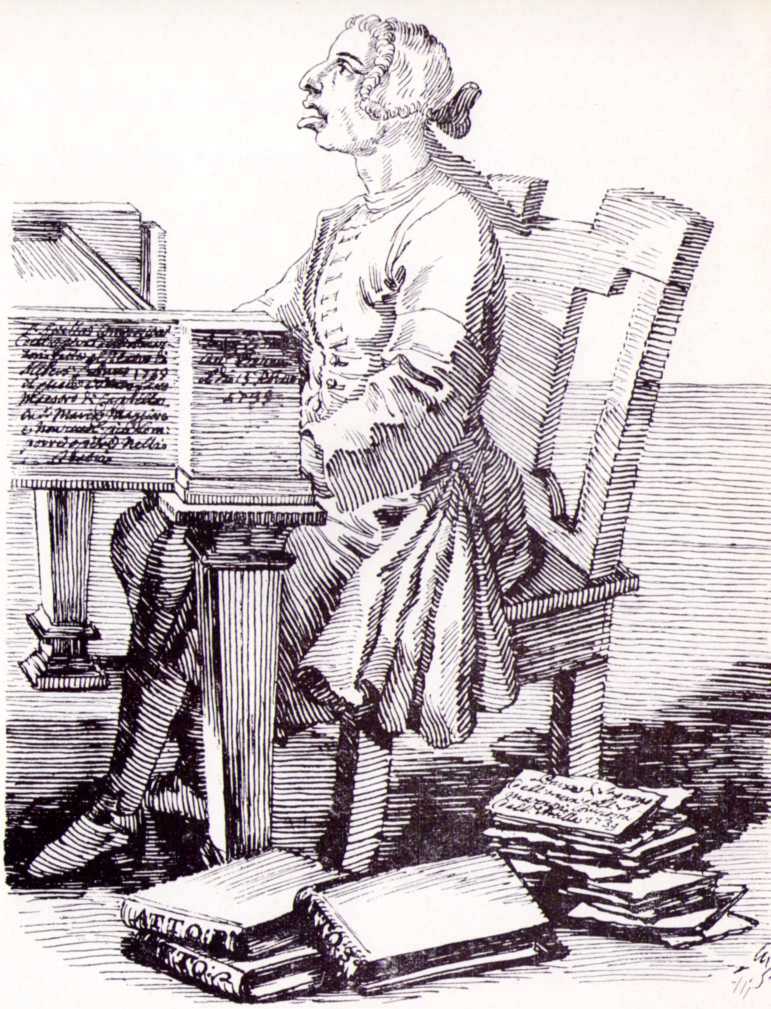|
Caterina Gabrielli
Caterina Gabrielli (12 November 1730 – 16 February or 16 April 1796), born Caterina Fatta, was an Italian coloratura singer. She was the most important soprano of her age. A woman of great personal charm and dynamism, Charles Burney referred to her as "the most intelligent and best-bred virtuosa" that he had ever encountered. The excellence of her vocal artistry is reflected in the fact that she was able to secure long-term engagements in three of the most prestigious operatic centers in her day outside of Italy (Vienna, St. Petersburg, and London). Biography Caterina Gabrielli was the daughter of a cook in the service of prince Gabrielli, in Rome. With the support of the prince, she studied with García and Porpora and at the L'Ospedaletto conservatory in Venice, and as a sign of gratitude she decided to assume her patron's surname as her stage name. Her humble roots were remembered by audiences in her nickname ''La cochetta'' ("little cook"), which was actually recorded ... [...More Info...] [...Related Items...] OR: [Wikipedia] [Google] [Baidu] |
Caterina Gabrielli
Caterina Gabrielli (12 November 1730 – 16 February or 16 April 1796), born Caterina Fatta, was an Italian coloratura singer. She was the most important soprano of her age. A woman of great personal charm and dynamism, Charles Burney referred to her as "the most intelligent and best-bred virtuosa" that he had ever encountered. The excellence of her vocal artistry is reflected in the fact that she was able to secure long-term engagements in three of the most prestigious operatic centers in her day outside of Italy (Vienna, St. Petersburg, and London). Biography Caterina Gabrielli was the daughter of a cook in the service of prince Gabrielli, in Rome. With the support of the prince, she studied with García and Porpora and at the L'Ospedaletto conservatory in Venice, and as a sign of gratitude she decided to assume her patron's surname as her stage name. Her humble roots were remembered by audiences in her nickname ''La cochetta'' ("little cook"), which was actually recorded ... [...More Info...] [...Related Items...] OR: [Wikipedia] [Google] [Baidu] |
Christoph Willibald Von Gluck
Christoph Willibald (Ritter von) Gluck (; 2 July 1714 – 15 November 1787) was a composer of Italian and French opera in the early classical period. Born in the Upper Palatinate and raised in Bohemia, both part of the Holy Roman Empire, he gained prominence at the Habsburg court at Vienna. There he brought about the practical reform of opera's dramaturgical practices for which many intellectuals had been campaigning. With a series of radical new works in the 1760s, among them ''Orfeo ed Euridice'' and '' Alceste'', he broke the stranglehold that Metastasian ''opera seria'' had enjoyed for much of the century. Gluck introduced more drama by using orchestral recitative and cutting the usually long da capo aria. His later operas have half the length of a typical baroque opera. Future composers like Mozart, Schubert, Berlioz and Wagner revered Gluck very highly. The strong influence of French opera encouraged Gluck to move to Paris in November 1773. Fusing the traditions of Ita ... [...More Info...] [...Related Items...] OR: [Wikipedia] [Google] [Baidu] |
Tommaso Traetta
Tommaso Michele Francesco Saverio Traetta (30 March 1727 – 6 April 1779) was an Italian composer of the Neapolitan School. Along with other composers mainly in the Holy Roman Empire and France, he was responsible for certain operatic reforms including reducing ornateness of style and the primacy of star singers. Biography Traetta was born in Bitonto, a town near Bari in the Apulia region, in Italy. He eventually became a pupil of the composer, singer and teacher Nicola Porpora in Naples, and scored a first success with his opera ''Il Farnace'' in Naples in 1751. Around this time, he came into contact with Niccolò Jommelli. From here on in, Traetta seems to have had regular commissions from all around the country, running the gamut of the usual classical subjects. Then in 1759, something untoward happened that was to trigger Traetta's first operatic re-think. He accepted a post as court composer at Parma. Parma, it has to be said, was hardly an important place in ... [...More Info...] [...Related Items...] OR: [Wikipedia] [Google] [Baidu] |
Naples
Naples (; it, Napoli ; nap, Napule ), from grc, Νεάπολις, Neápolis, lit=new city. is the regional capital of Campania and the third-largest city of Italy, after Rome and Milan, with a population of 909,048 within the city's administrative limits as of 2022. Its province-level municipality is the third-most populous metropolitan city in Italy with a population of 3,115,320 residents, and its metropolitan area stretches beyond the boundaries of the city wall for approximately 20 miles. Founded by Greeks in the first millennium BC, Naples is one of the oldest continuously inhabited urban areas in the world. In the eighth century BC, a colony known as Parthenope ( grc, Παρθενόπη) was established on the Pizzofalcone hill. In the sixth century BC, it was refounded as Neápolis. The city was an important part of Magna Graecia, played a major role in the merging of Greek and Roman society, and was a significant cultural centre under the Romans. Naples served a ... [...More Info...] [...Related Items...] OR: [Wikipedia] [Google] [Baidu] |
Teatro San Carlo
The Real Teatro di San Carlo ("Royal Theatre of Saint Charles"), as originally named by the Bourbon monarchy but today known simply as the Teatro (di) San Carlo, is an opera house in Naples, Italy, connected to the Royal Palace and adjacent to the Piazza del Plebiscito. It is the oldest continuously active venue for opera in the world, having opened in 1737, decades before either Milan's La Scala or Venice's La Fenice."The Theatre and its history" on the Teatro di San Carlo's official website. (In English). Retrieved 23 December 2013 The opera season runs from late November to July, with the ballet season taking place from December to early June. The house once had a seating capacity of 3,285, but has now been reduced to 1,386 seats. Given its size, structure and antiquity, it was the model for theatres that were ... [...More Info...] [...Related Items...] OR: [Wikipedia] [Google] [Baidu] |
Il Bellerofonte
''Il Bellerofonte'' is an 18th-century Italian opera in three acts by the Czech composer Josef Mysliveček. It conforms to the serious type ( opera seria) that was typically set in the distant past. The libretto, based on the Greek legend of Bellerophon, was written by Giuseppe Bonecchi. The work was dedicated to King Ferdinand I of the Two Sicilies and was first performed at the Teatro San Carlo in Naples on 20 January 1767, the birthday of his father, King Charles III of Spain. The cast featured two stellar singers of the time, Caterina Gabrielli and Anton Raaff, in the leading roles. The opera was only the composer's second one, and the first that permitted him the opportunity to write music for first-rate vocal artists. The production was highly successful, indeed responsible for a meteoric rise in his reputation as an operatic composer. From the time of the premiere of ''Bellerofonte'' until his death in 1781, Mysliveček succeeded in having more new ''opere serie'' bro ... [...More Info...] [...Related Items...] OR: [Wikipedia] [Google] [Baidu] |
Josef Mysliveček
Josef Mysliveček (9 March 1737 – 4 February 1781) was a Czech composer who contributed to the formation of late eighteenth-century classicism in music. Mysliveček provided his younger friend Wolfgang Amadeus Mozart with significant compositional models in the genres of symphony, Italian serious opera, and violin concerto; both Wolfgang and his father Leopold Mozart considered him an intimate friend from the time of their first meetings in Bologna in 1770 until he betrayed their trust over the promise of an operatic commission for Wolfgang to be arranged with the management of the Teatro San Carlo in Naples. His closeness to the Mozart family resulted in frequent references to him in the Mozart correspondence. Biography Mysliveček was born in Prague, one of twin sons of a prosperous mill owner, and studied philosophy at Charles-Ferdinand University before following in the footsteps of his father. No documentation exists to support claims that he was actually born in H ... [...More Info...] [...Related Items...] OR: [Wikipedia] [Google] [Baidu] |
Johann Adolf Hasse
Johann Adolph Hasse (baptised 25 March 1699 – 16 December 1783) was an 18th-century German composer, singer and teacher of music. Immensely popular in his time, Hasse was best known for his prolific operatic output, though he also composed a considerable quantity of sacred music. Married to soprano Faustina Bordoni and a friend of librettist Pietro Metastasio, whose libretti he frequently set, Hasse was a pivotal figure in the development of ''opera seria'' and 18th-century music. Early career Hasse was baptised in Bergedorf near Hamburg where his family had been church organists for three generations. His career began in singing when he joined the Hamburg Oper am Gänsemarkt in 1718 as a tenor. In 1719 he obtained a singing post at the court of Brunswick, where in 1721 his first opera, ''Antioco'', was performed; Hasse himself sang in the production. He is thought to have left Germany during 1722. During the 1720s he lived mostly in Naples, dwelling there for six or seven y ... [...More Info...] [...Related Items...] OR: [Wikipedia] [Google] [Baidu] |
Giuseppe Scarlatti
Giuseppe Scarlatti (1718 or 18 June 1723, Naples – 17 August 1777, Vienna) was a composer of ''opere serie'' and ''opere buffe''. He worked in Rome from 1739 to 1741, and from 1752 to 1754 in Florence, Pisa, Lucca and Turin. From 1752 to 1754, and again from 1756 to 1759, he worked in Venice and for short periods in Milan and Barcelona. In 1760 he moved to Vienna, where he enjoyed the friendship of Christoph Willibald Gluck. "The third most important musician of his clan", it is still uncertain whether he was born on 18 June 1723 as the nephew of Alessandro or in 1718 as nephew of Domenico. Giuseppe Scarlatti was married to the Viennese singer Barbara Stabili who died about 1753. By 1767 he had married Antonia Lefebvre, who that year bore him a son; she died three years later. Scarlatti died intestate in 1777 in Vienna. [...More Info...] [...Related Items...] OR: [Wikipedia] [Google] [Baidu] |
Ezio (Latilla)
''Ezio'' is an opera eroica or "heroic" opera in 3 acts by Gaetano Latilla. The opera uses an Italian-language libretto by Pietro Metastasio. Metastasio's libretto was partly inspired by Jean Racine's play ''Britannicus'' and had earlier been set to music by George Frideric Handel in 1732. The work's protagonist is the fifth-century AD Roman general Flavius Aetius (Ezio in Italian), returned from his victory over Attila. Latilla's version premiered at the Teatro di San Carlo in Naples on 10 July 1758. The composer both directed and conducted the production and Vincenzo Re designed the sets used in the premiere. The cast included Giovanni Carestini in the title role, Caterina Gabrielli as Fulvia, Maddalena Galli as Onoria, Caterina Galli as Valentiniano III (Valentinian III), Gregorio Babbi Gregorio Babbi (6 November 1708, Cesena – 2 January 1768) was an Italian operatic tenor. He performed in the premieres of numerous operas, including works by Girolamo Abos, Pietro Auletta, A ... [...More Info...] [...Related Items...] OR: [Wikipedia] [Google] [Baidu] |
Gaetano Latilla
__NOTOC__ Gaetano Latilla (12 January 1711 – 15 January 1788) was an Italian opera composer, the most important of the period immediately preceding Niccolò Piccinni (his nephew). Latilla was born in Bari, and studied at the Loreto Conservatory in Naples. He began writing comic operas for the Teatro dei Fiorentini in Naples in 1732, and is best known for his settings of ''Gismondo'' (Rome, 1737) and ''Madama Ciana'' (Rome, 1738). These two works, along with two by Rinaldo da Capua, formed the core of the traveling Italian comic opera repertory of the 1740s and early 1750s. He also wrote some opere serie, the first of which was a setting of ''Demofoonte'' (Venice, 1738). He died in Naples. See also * List of operas by Gaetano Latilla This is a list of the complete operas of the Italian composer Gaetano Latilla __NOTOC__ Gaetano Latilla (12 January 1711 – 15 January 1788) was an Italian opera composer, the most important of the period immediately preceding Niccolò Picci ... [...More Info...] [...Related Items...] OR: [Wikipedia] [Google] [Baidu] |
Siroe (Errichelli)
''Siroe'' is a dramma per musica or opera seria in 3 Acts by composer Pasquale Errichelli. The opera uses an Italian language libretto by Pietro Metastasio. The opera premiered at the Teatro di San Carlo in Naples Naples (; it, Napoli ; nap, Napule ), from grc, Νεάπολις, Neápolis, lit=new city. is the regional capital of Campania and the third-largest city of Italy, after Rome and Milan, with a population of 909,048 within the city's adminis ... on 26 December 1758. Vincenzo Re designed the sets for the premiere production. Roles References {{reflist 1758 operas Italian-language operas Operas Operas by Pasquale Errichelli Opera world premieres at the Teatro San Carlo ... [...More Info...] [...Related Items...] OR: [Wikipedia] [Google] [Baidu] |





